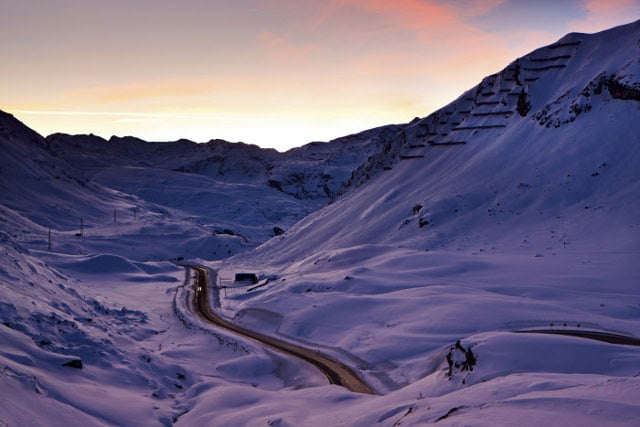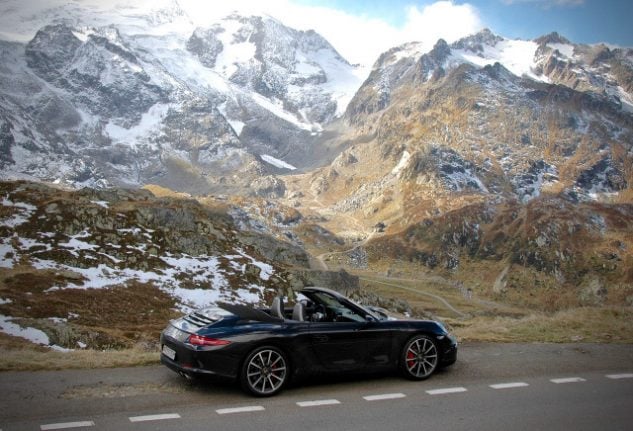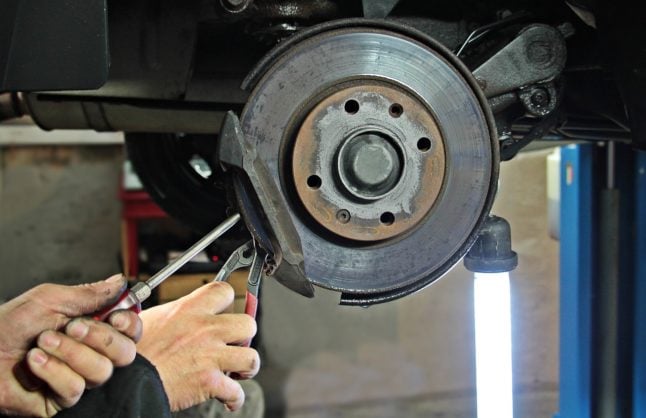
ROADS
A petrolhead’s guide to driving Swiss mountain roads
The Local recently asked its readers why they love living in Switzerland. My answer? Because it's paradise for petrolheads, writes contributor Ross Bennie.
Published: 21 June 2017 11:08 CEST

Photo: Ross Bennie
As spring turns to summer and the highest mountain passes finally reopen after a long winter, now seems the perfect time to list my top five roads in Switzerland, decided upon over 20 years and thousands of kilometres of hard driving.
But first, to those who like this kind of thing, what makes a good mountain road? The classic image of a mountain pass is an endless series of hairpin bends connected by short straights. Trouble is, these can be a bit monotonous.
What's needed is a variety of twists, turns and straights, combined with a mixture of steeper and flatter sections. Ideally the road should be wide enough for two cars to pass each other comfortably without either having to slow down, and the surface should be smooth for reasons of comfort and safety. It will be scenic (which can be taken for granted in Switzerland) and should be challenging to drive.
In reverse order, then, my top five are:
5. Gurnigel Pass
Photo: Ross Bennie
I've broken my own rules here, because this road is rather narrow in places, but it makes up for that with a lower section starting in Rüti bei Riggisberg (canton Bern) that's so entertaining they close the road for a weekend every September to use it for the Bergrennen Gurnigel hillclimb event. On safety grounds, there hasn't been a circuit race in Switzerland since the Le Mans disaster in 1955, so this is as good as it gets for local motorsport fans.
At just over 1,600m, Gurnigel is relatively low for a Swiss mountain road, and according to motorcyclist Patrick Köhli, “this allows us bikers to ride a snowy mountain pass early in the year when almost every other pass is still closed. It's probably the only time and place in Switzerland where skiers, snowboarders and bikers meet.”
4. Flüela Pass
Photo: Ross Bennie
Starting or finishing in the eastern Swiss alpine resort of Davos, where the global elite gather every winter for the World Economic Forum, this road has it all; it's long, high, wide, twisty, scenic, and because it's tucked away in the southeast of the country, there's usually not that much traffic.
Before they discovered the Transfăgărășan in Romania, the former presenters of UK car show Top Gear declared the Flüela to be part of the best driving road in the world.
3. Fuorn Pass
Photo: Ross Bennie
Not far from the eastern end of the Flüela road lies the Romansh-speaking village of Zernez, gateway to the Swiss National Park. Who would've thought a nature reserve would contain one of the best drives in the country? But here it is – a challenging road which is less about climbing and more about cornering.
As a contrast, you also have the option to drive into Italy through the arrow-straight single-track 3.5 km Munt la Schera Tunnel.
2. Grimsel Pass
Photo: Ross Bennie
Start at Innertkirchen in canton Bern and make your way up a life-affirming route past a series of towering dams and milky lakes that make up what's basically one huge hydro-electric power facility, then over the top and down into the ghost town of Gletsch. From there you can drive the Furka Pass, a location used in 1964 James Bond film Goldfinger. And after that, you'll be ready for the…
1. Susten Pass
Photo: Ross Bennie
Truly a prince among mountain passes. If you travel from east to west, it starts with a spectacular tunnel-bridge-tunnel combination in Wassen (canton Uri) and just gets better and better from there, particularly on the Bernese side of the 2,260m summit. Patrick Köhli agrees: “I don't know any biker who doesn't immediately shout out 'Susten Pass' when asked what their favourite mountain road in Switzerland is.”
When Porsche launched a special limited edition of their evergreen 911 sports car in 2016, they used the Grimsel and Susten passes for the promotional video. It's not hard to see why.
Honourable mentions

The Julier Pass. Photo: Roland Gerth/Swiss Tourism
The thing about personal lists is that they're…well…personal, so no two people will entirely agree. Patrick Köhli lists the Julier Pass in the Graubunden in his top five, with an “incredible atmosphere on top turning [it] into bikers' heaven.” It's thought that Roman dictator Julius Caesar gave his name to the route as it was a convenient way to move his armies across the Alps (and not because he enjoyed riding a chariot up there at the weekend).
Another opinion comes from motorist Marino Kilchhofer, who's a fan of the Schallenberg Pass in the Emmental region. At a mere 1,167m, the highest passes tower more than a thousand metres above it, but Kilchhofer explains that “because the Schallenberg is not so high and quite short you can do two or three laps a day, and different routes are possible,” as well as there being “not too much traffic and normally no camper vans.”
He agrees with Köhli that while the lower passes may lack the last word in drama, they compensate with a longer period of accessibility. Kilchhofer's clincher for the Schallenberg road is that “you could even stop at the Kambly factory to buy some biscuits.”
Driving tips
Photo: Ross Bennie
After that lot, hopefully you're already planning your own road trip. To really make the most of the journey, bear in mind the following tips.
First, don't go too fast. The national 80 km/h speed limit is more than enough on these roads. And while there isn't a cop on every street corner as you might have heard, by speeding you are risking a heavy fine. But much worse, you might be risking your own life or someone else's. These are great roads, but dangerous ones if you're not careful. Just ask TV presenter Richard Hammond, who was lucky to survive after crashing a million-dollar car in Switzerland recently.
Spare a thought for the motorcyclists you'll encounter – make sure you give them enough space by sticking to your own side of the road. Usually they're faster than cars, so don't race; let them through.
And remember that the weather can be totally different at the top of a mountain pass, with rain, rivulets of melting snow, or even ice on the road, especially in early summer. Drive according to the conditions and all should be well.
The last tip is to try and avoid the crowds. Not everyone has a motorcycle or a sports car, which make it easier to overtake sluggish camper vans. The obvious solution is to get up early, and it works, though everyone knows that and the roads do get busy, especially at weekends. If you want to have the tarmac to yourself, a better bet is to do your mountain driving on a weekday early in the evening, between about six and eight, then make your way home on the highway as it gets dark.
I wish you a safe and enjoyable trip. As they say around here, gute Fahrt!
Url copied to clipboard!


 Please whitelist us to continue reading.
Please whitelist us to continue reading.
Member comments